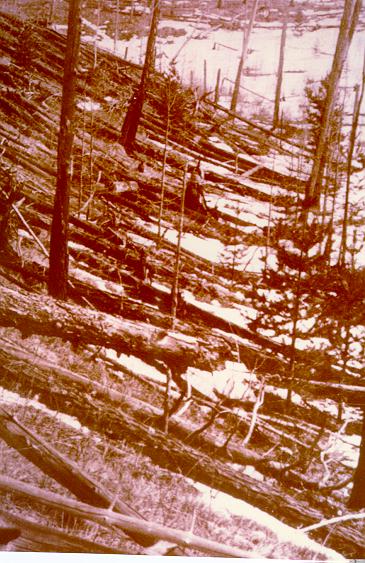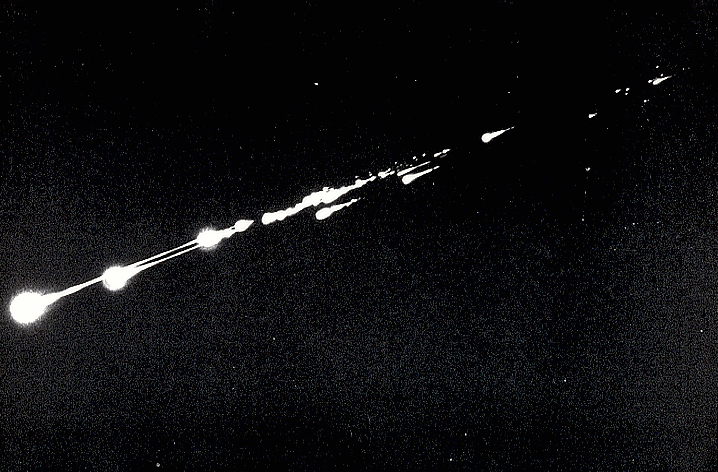Meteoritic Impact Rates on Earth
It's not hard to imagine the devastation to life on
Earth, should an asteroid hit us.
Objects up to about 1 km in diameter will cause extreme
local damage, but pose no global threat. However objects
greater than 1 km in diameter, resulting in 1 million megatons
of TNT, would be large enough to perturb the
Earth's climate on a global scale. About 25% of humanity
would be wiped out. How often do such events occur?

 New Tunguska Site
Tunguska
New Trajectory
(The trajectory)
New Tunguska Site
Tunguska
New Trajectory
(The trajectory)
In 1908, something exploded about 8 km above the ground, over an
extremely remote section of Northern Russia. Witnesses much
farther south only saw the trail of a fireball going north,
then a tremendous rumbling, like an earthquake.
Today most scientists believe it was a comet or a stony
asteroid, about 50 m in diameter. It had the energy of
20 megatons of TNT (1000x Hiroshima bomb), destroying
an area the size of Rhode Island. In 1929 a scientist
investigating stories from that incredible night,
found and photographed the site:
 PEEKSKILL (October 9, 1992)
PEEKSKILL (October 9, 1992)
On October 9, 1992 a fireball brigh like the full moon (-12) was observed in Northern America. The cosmic body ended
its flight on a car in Peekskill (NY, USA) and a meteorite (H6) of 12.4 kg was recovered.
What is a Bolide? When a rather porous, but large meteroid enters the atmosphere and explodes in a single extremely bright burst. Another great impact/meteor website, here. Interested in Comets & Meteor Showers? Go here